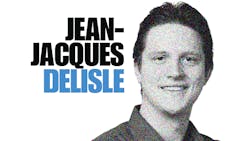The past two months have been thrilling for me. Not only did I make a big move from Rochester, N.Y., to New York City, but I began working with the Microwaves & RF team as technical editor. Nancy Friedrich, Jack Browne, and the rest of the team have done a tremendous job in giving me an introduction to a different side of the RF industry from what I am used to, and I am excited to really dig in. Already I have interviewed several CEOs, chatted with experts in a range of fields, researched products/design trends, and had the opportunity to immerse myself in a field that I am passionate about. So when Nancy asked me to write a guest editorial this month, I jumped at the chance to share my excitement and mission.
This file type includes high resolution graphics and schematics when applicable.
Throughout college and once I began working, the complex problems just waiting for solutions are what drew me so strongly to the RF design field. My studies and work focused on everything from the design and testing of ICs, control systems, sensors, and test fixtures to sustainable energy solutions and more. But none of these fields alone really matched the complexity and detail necessary to design RF technologies, as this field requires a level of consideration and thought that is staggering.
I relished the challenge and quickly learned that a little bit of knowledge in this field is dangerous, a good amount of knowledge is helpful, and expertise in an RF field makes you feel like you have magical powers. I also learned that with great power come great difficulties, roadblocks, and headaches. With RF technology, if you make a little mistake it’s big, big mistakes cost a lot of money, and often you are reinventing the wheel anyway.
There have been many RF experts since Tesla befuddled everyone almost a century ago, but most people don’t know any more about RF then they did back then. Many of these experts are just as secretive as Tesla, or just too overworked to share the bounty of their knowledge. The roadblock could also be the math involved. Either way, I found that there were great solutions to a lot of design problems I ran into, but I either didn’t know the right terminology to describe it, or the solution was in a scope so different from what I was working in, I didn’t know what I was looking at. Oh and, of course, some RF fields change every year.
These frustrations and design challenges are what make me really excited about working with Microwaves & RF, as the magazine and website are geared to providing knowledge and direction to designers for all matters RF while staying updated. There is a lot more out there than just what is shared in scientific journals, and my goal is to help get that information into the hands of RF designers in a timely fashion, and in a way that adds value.
This file type includes high resolution graphics and schematics when applicable.
About the Author
Jean-Jacques DeLisle
Jean-Jacques graduated from the Rochester Institute of Technology, where he completed his Master of Science in Electrical Engineering. In his studies, Jean-Jacques focused on Control Systems Design, Mixed-Signal IC Design, and RF Design. His research focus was in smart-sensor platform design for RF connector applications for the telecommunications industry. During his research, Jean-Jacques developed a passion for the field of RF/microwaves and expanded his knowledge by doing R&D for the telecommunications industry.

